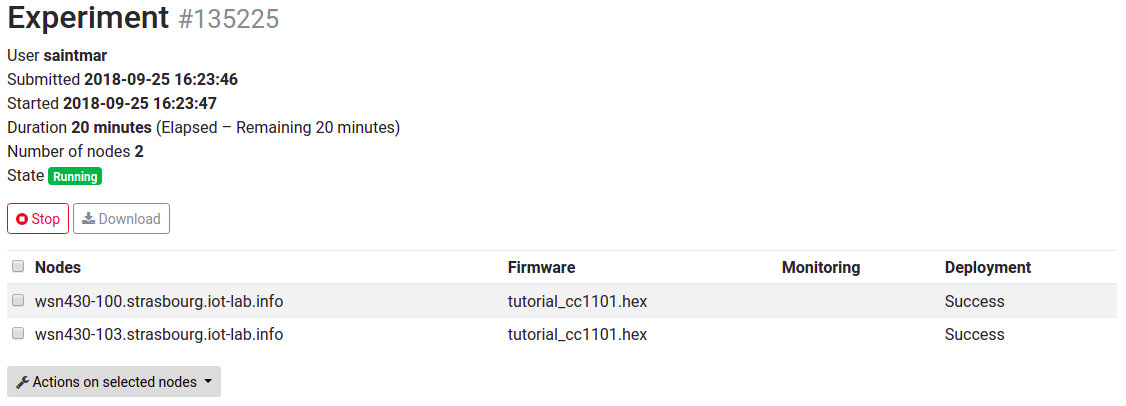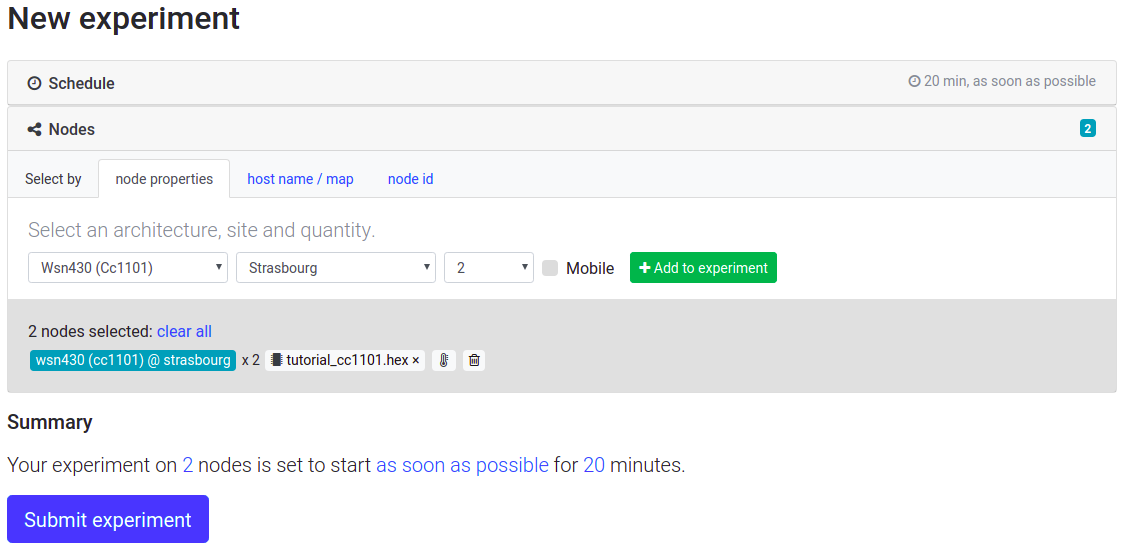Submit an experiment with Web portal and WSN430 nodes
![]() Difficulty: Easy
Difficulty: Easy
![]() Duration: 10 minutes
Duration: 10 minutes
Prerequisites: Configure SSH Access
Description: The aim of this first tutorial is to discover the IoT-LAB testbed tools by creating and submitting your first experiment, and then interact with running nodes. You will book two wsn430 nodes on the Grenoble site, set them up with a sample firmware file, and deploy it on nodes. Once deployed, you will hop onto the ssh frontend to interact with the firmware running on the nodes, read sensor values and send radio packets.
- Log into the Webportal
- Launch a new experiment
- Download the binary firmware for wsn430 nodes (source code is available is here)
- Schedule: set an experiment name (no spaces nor funny chars in the experiment name)
- Nodes: Add to experiment (with node properties tab) two nodes with WSN430 (CC1101) archi on the Strasbourg site
- Add firmware to your nodes selection
- Submit experiment
- Wait experiment state Running in the Schedule dashboard section. After click on experiment details and visualize which nodes you are booked and verify that you have Success in the deployment result

- Connect to the SSH frontend of Strasbourg (or of the site where your experiment is running):
my_computer$ ssh <login>@strasbourg.iot-lab.info
- Interact with wsn430 nodes. Provided firmwares offer an interaction menu via the device’s serial port. Note that your own firmware should include the dialog with the serial port. Device’s serial port is available from the ssh frontend using ”nc <device name> 20000”. For a wsn430 node:
<login>@strasbourg:~$ nc wsn430-<id> 20000 IoT-LAB Simple Demo program Type command h: print this help t: temperature measure l: luminosity measure u: print uid s: send a radio packet Type Enter to stop printing this help cmd >
- Enjoy with commands and verify that a node sends a radio packet is received by the other nodes of a same type with two terminalsOn the first terminal, you send a radio packet :
<login>@strasbourg:~$ nc wsn430-<id1> 20000 cmd > s cmd > radio > Packet sent
On the second terminal, you will receive it :
<login>@strasbourg:~$ nc wsn430-<id2> 20000 cmd > radio > Got packet from c05e. Len: 16 Rssi: -66: 'Hello World!: 0'
To avoid opening as many terminals as nodes, use Serial aggregator tool.
